Car Maintenance
Cars with the Biggest Mileage

Irving Gordon in his 1966 Volvo 1800S.
There is such a thing as the “Million-Mile Club”, a club for owners of cars which have travelled the 1–million milestone. It is a very distinguished club that boasts a special list of cars and some special owners who have clicked over the huge distances. The details of the car plus its owner can be proudly enlisted for the world to see and admire. What cars feature most in the highest of highest mileage cub? Maybe not so surprising to some people, but a few of the older vehicles made by Volvo and Mercedes have made it onto this rather prestigious list. There certainly was a time where Mercedes Benz and Volvo made some of the most bulletproof cars on the planet.
Maybe some of these big mileage cars should be regarded as being sustainably green. How many times would other people have bought a new car in that time?
Now I have a sneaky suspicion that there could be an old Ford Falcon or a Commie that could make its way onto the big milage hall of fame. I did see on a Ford Forum page that of the AU-BF Falcon models, there was an AU Falcon Taxi with 930,000 km, and 04 BA Falcon XT wagon Egas with 906,600 km, an AU Forte Duel Fuel with 850,000 km and a BA Falcon Egas with 566,000 km on it. These are big numbers, but not quite 1 million miles! Sorry Holden fans, I can’t find any with much over 300,000 km!
Here’s a quick list of some of the furthest travelled cars on the planet – highest first:
- Over 3,000,000 miles (Over 4,800,000 km) – the highest recorded thus far by Irving Gordon in his 1966 Volvo 1800S. He changed the oil every 3,000 – 3,500 miles and changed the transmission fluid every 25,000 miles. Sadly, Irving has recently passed away.

Irving Gordon in his 1966 Volvo 1800S.
2) Gregorios Sachinidis with his 1976 Mercedes 240D clocked 2,850,000 miles. The car, predominantly a taxi, is now on display in Mercedes-Benz’s personal museum as the longest running vehicle in the brand’s history.
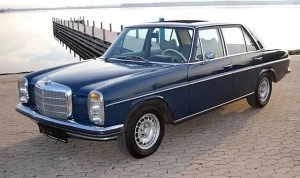
A Mercedes Benz 240D a bit like his.
3) 1979 Volvo 245 GL, a well maintained Finnish company vehicle covered 1,630,000 miles.
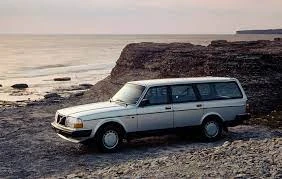
The Volvo 245 GL Estate
4) A 1963 Plymouth Fury takes out fourth place having reached 1,620,000 miles by 1999. It was owned and driven by Joseph Vaillancourt, however it was totalled by another road user in a truck running a red light. Thankfully Joseph was unhurt!
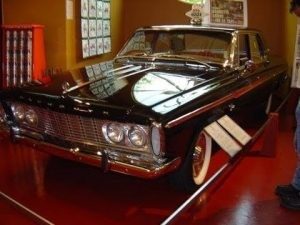
A Plymouth Fury
5) A 1983 Lincoln Town Car that was owned by Chet Belisle covered 1.3 million miles. He drove because he loved driving it.
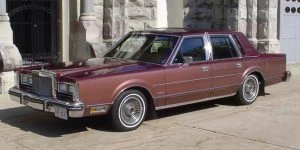
A Lincoln Town Car
6) A 1991 Chevrolet Silverado owned by Frank Oresnik put over 1.25 million miles on the odometer.
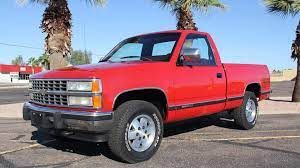
A 1991 Chevrolet Silverado
7) A 1993 Toyota Corolla in New Zealand has just recently clocked a huge 1.25 million miles (2,000,000 km) since new. The Whanganui Chronicle’s local newspaper delivery contractor, Graeme Hebley, bought the Corolla wagon from Japan in 2000 with 80,000 km on the odometer. Since then, he has since driven approximately 5000 km every week between Wellington and New Plymouth for work. The engine, transmission, bodywork, and drivetrain are entirely original, all thanks to a maintenance routine where the vehicle is serviced every second week. It has had its cambelt changed close to 20 times in its life.

Graeme Hebley and his Toyota Corolla
8) A 2006 Chevrolet Silverado 3500 Diesel owned by Hugh & Tammy Pennington has done well over the 1 million mile mark with no major maintenance. Routine servicing was the key.
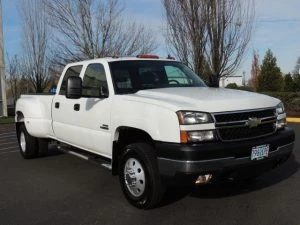
A 2006 Chevrolet Silverado
It’s School Run Time Again!
Well, the start of another school year is upon us, which means that the roads at certain times of the day are going to be super-busy as mums and dads do the school run. If your child is starting school for the first time or if he/she is going to a new school that’s beyond walking distance, you might be wondering about doing the school run for the first time. What do you need to know? And how do you get your car ready for the school run?

First of all, figure out whether you want to be part of a car pool scheme or whether you’re only going to pick up and drop off your own kids. This depends on a number of factors, including how large your family is and where all the other families involved in the car pool scheme live. It also depends on how large your family vehicle is. If what’s handy for the school run is a smaller two-door hatchback that requires passengers to do a fair bit of clambering in order to be squished in the back seat, then you may not be all that popular. However, if you have a minivan or MPV handy, then you’re probably the obvious choice for doing the school run.
If you choose to go down the car pool route, then sit down and negotiate everything with the others involved in the scheme. What happens when someone is ill or has an unexpected meeting at an awkward time? If someone has to do the lion’s share of the driving (that person with the seven-seater, for example), how will they be compensated for the extra fuel (or power) costs? Will the car pool only be for the mornings, or will it be for afternoons as well – and what happens when one (or more) of the kids has after-school sports or drama or something along those lines? Carpooling, while good in theory, might not work for everybody in all situations.
Getting The Car Ready
Here, we’ll assume that your situation is like mine: two kids and no nearby families, so you’re doing the school run on your own. Do you need to do anything to get your car ready specifically for the school run?
Your car will already be set up in many ways for carrying your own kids (booster seats, for example) but there may be a few more things that you need to think about. For example, will you carry school bags in the boot or in the car cabin? What happens if someone has to carry an extra-big delicate school project – where will that go? How will you make sure that the inevitable paper notices that kids come out of school clutching at the end of the school day don’t get lost in all the other bits that creep into a car’s cabin over time (we’ve all been there!). If you have some sort of system, the chances that an important notice will get lost in the seat-back storage pocket or in the footwell will be minimised.
Other things you might want to get ready include:
- Having USB chargers ready to go in case someone needs to charge their phone, tablet or laptop – especially if they have only just realised that the laptop has low battery and they’re going to be the first person to present a speech when they get to school.
- Snacks for after school. Kids are often hungry after a busy day, and this can make them grumpy and whiny, especially if you end up getting stuck in a traffic jam. Dried fruit, nuts, rice crackers and bliss balls are all easy to store in the glove box to restore flagging blood sugar levels while still being reasonably healthy.
- An umbrella. Weather can be fickle, and if you opt to park further down the road then walk to meet your kids at the school gate, there will inevitably be a day when you didn’t think it was going to rain but…
Cleaning your car before the school year begins is your choice, although I’d recommend giving the inside a good vacuum just to give it that fresh, new feeling that you always get at the start of a new school year. If your kids are old enough to be embarrassed by a dirty car exterior, or if they’re old enough to find writing “Clean Me” messages in the dust funny, they’re old enough to be made to wash the car themselves. You could make going to the car wash a bit of a weekly ritual – perhaps at the end of the week.
School Run Etiquette
When you do the school run, it’s important to be courteous and considerate of other parents and other children. Don’t go all Mama Bear, ready to run roughshod all over other people in order to get your kids. Every other parent is as stressed and protective as you are. What’s more, congestion and visibility are real hazards around school gates at the busy times of day. To ensure that everybody stays safe, follow the etiquette rules:
- Don’t double-park, park in bus stops or park in No Parking zones. Parking a little way down the road and having a short walk won’t do you or your kids any harm.
- Keep your speed down, no matter how busy or rushed for time you are.
- Respect zebra crossings – that’s a no brainer.
- Don’t honk your horn to get your child’s attention.
- Avoid getting into silly status games with other parents involving fashion, achievements and vehicle type.
- Respect rules such as the time limit in the “kiss and run” zones.
- Model the sort of patience that you would expect your kids to demonstrate, especially regarding places in the queue, waiting your turn and so forth.
- If someone else breaks these rules, refrain from shouting corrections and comments out the window. You don’t want to be a Karen.

An MPV – Great for School Runs!
What Tyre do I Need?

Tyres are the most crucial component to any drive. Safety matters out there on the roads, and ensuring that you have a good set of tyres rolling beneath your car makes all the difference to aspects of driving like your stopping ability, road holding capacity and anti-aquaplaning.
What the heck is aquaplaning? You may have experienced aquaplaning already when driving on a wet road and in the rain where puddles have formed over the road. Hit these puddles at a reasonable speed, and the tyres can skid over the top of the puddles, causing complete loss of traction to whichever tyre is aquaplaning at the time. Aquaplaning and sliding in the wet can and unfortunately does cause accidents.
Obviously, slowing down in the wet helps lessen the chance of having an aquaplane experience. However, there are other aspects to the tyre which can affect how your tyres will cope with puddles and water on the road during wet driving conditions. The condition of the tyre, the tread pattern the tyre has, and the amount of tread depth left on the tyre all decide how your tyre will cope with wet road conditions. These three components combined with how fast your car is travelling are the main players to whether or not you’ll roll through the puddle, displacing the water, or skid over the top of the puddle in much the same way as a skim board does in the shallow water at the beach.
Tyres are the only element of a car that is in contact with the ground while driving. Choosing the right tyres can increase the entire performance of your vehicle. Every tyre has its strengths and weaknesses. Some tyres are long-lasting, while others offer better grip. Some tyres are designed to be quiet and smooth while driving, while others have a tread pattern designed for better fuel consumption. There are tyre testers out there like, Tyre Lab at www.thetyrelab.com, that single out tyres that perform best for all road conditions or for certain types of road conditions. However, it is a fairly well-known fact that the more you invest in a tyre, the better the tyre quality will be and, consequently, the safer your driving experience. That said, you might be surprised (or not) at which tyres are rated highly for braking, anti -aquaplaning and road holding by The Tyre Lab.
By law, in Australia the minimum tread depth for a tyre is 1.5 mm. When it’s raining, the tread is responsible for securing contact between the tyre and the road, effectively pushing the water out from under the tyre as it rolls along.
Need new tyres?
First, find out the specifications in size and type from your car’s manufacturer, and this is the best size to go for. You can also find out what kind of tyres you need, by looking on the side wall of your current tyres. You will see a combination of characters which look a bit like this: 215/55R17 94H. If your car has been mucked with, then make sure you check the manufacturer’s specs.
You will need to have an idea of how much you are going to spend at the tyre shop. Choosing between a premium tyre and value is not always easy, or maybe it’s just too easy. There are even budget tyres, which can be good if you aren’t into driving quickly, however, if you do go for these, they won’t have the best grip for all occasions and for emergency situations in the wet and dry.
Tyre choice really does come down to your own individual needs, the weather conditions and climate you’ll be driving in, how icy or cold the roads can get, how hot it is, and definitely how hard and fast you drive your car.
Not all tyres are the same. So, if you buy a premium tyre that is designed with performance ability and grip for extreme hard and fast driving, but you drive like a snail, you’ll be perfectly safe in all road conditions. If on the other hand you drive like a racing car driver, where you pass every other car in sight, and yet you are driving with budget tyres, your safety and the safety of others will be massively compromised.
There are those of us who drive within the law and try to maintain a decent speed in all road and weather conditions. We will try and slowdown in the wet for example. We all need to be driving safely, yet it does help to know just what sort of tyres are on the car you drive and what they are capable of out there on the road. Just as equally-valid is knowing just what your tyres are not capable of. There is nothing worse than losing traction or have a tyre’s integrity let go in a life threatening situation.
Every journey is dependent on the performance of your tyres and their effect on your driving. Tyres impact on your steering, acceleration, handling, and braking. They’re also a key part of your car’s suspension and braking systems. If you don’t have the right tyres for your car, tyres that are legal and in good shape, you’re putting yourself, your passengers and other road users at risk.
Budget tyres versus Premium tyres
Even though all tyres look pretty much the same, the difference between a budget tyre and a quality tyre is huge. It comes down to the fact that the quality of the materials used in creating a premium tyre just can’t be replicated in a cheaply-made tyre.
Premium tyres have to meet high standards and are therefore made with more steel and specially formulated rubber and silica compounds. These high quality tyre materials ensure that the final product is much stronger, longer-lasting, and one that offers better grip than a cheap tyre option.
Premium tyre manufacturers focus on research and development, and often they will be linked with the motorsport world where competition in tyres really matters. Years of testing has proven that premium tyres do perform better and more consistently than a cheaper tyre alternative.
Premium tyres generally include names like: Dunlop, Michelin, Pirelli, Bridgestone, Kumho, Hankook and Continental. Manufacturers of quality tyres will achieve higher standards than a budget or value tyre in all aspects of a tyre’s job prescription. This will include: good grip for all driving conditions, exceptional wet and dry braking, superior handling at any speed, a higher impact damage threshold, better load-carrying capability, a longer service life (unless, of course, they are track racing tyres with a super-soft compound for ultimate grip on the track), better fuel economy, improved driving comfort; reduced noise, vibration and harshness.
We hope this was helpful.
Christmas Gifts For Driving Enthusiasts

Christmas is incoming and it’s nice to imagine what some ideal gifts might be for the drivers in our lives. Christmas is the time of year when we can think about God’s greatest gift to mankind: His Son Jesus. What better way to acknowledge this by giving some great automotive gifts to our family and friends, so here are some Christmas gift ideas for the driving enthusiast in your life:
A gift voucher
A gift voucher to a local automotive trade store gives a driver access to a world of automotive retail. Repco or Supercheapauto are two big outlets with so many possibilities that will make a driver happy over the Christmas period and into the new year. You can purchase anything from sound systems, after market GPS units, reversing cameras, tools and so much more…
Seat Covers
A new set of seat covers can make the environment of a vehicle that little bit nicer. We’ve just recently put a fine set of burgundy sheepskin covers on the front seats of our car, and I can say that they have instantly made the seats more comfortable, particularly for long journeys, and have given the interior a lift in its own individuality and style.
Cabin Air Freshener
It won’t be a gift for just anyone, but I’ve seen some little yellow sunflower air freshener diffusers. These are made from an eco-friendly material and deliver a high quality fragrance for the car which is, importantly, non-toxic. The sunflower design is cute and attractive, and it simply clips onto the air vents. Having bright little sunflowers around the dash conveying their sweet aroma is a sure way to brighten up any long journey this summer.
You can also buy some more manly looking air freshener diffusers (i.e., in the shape of a pine tree or rugby ball). I’ve also just seen a cool car aromatherapy set of round essential oil jars that clip onto the vents. On the front of the diffuser is a stunning scene of a night sky full of stars.
Cup Holder Coasters
Even a set of stylish coasters for the cup holders can brighten up a car’s interior. There are many types available with auto logos (e.g., Ford, Alfa Romeo, BMW), and then many abstract designs as well.
Car Mats
One part of the car’s interior that can quickly look drab is the floor mats. A new set of rubber or carpet mats for a car can lift the interior instantly. Just make sure that the floor mat design is appropriate for the car and the driver in your life.
Car Valet Voucher
This is a very nice gift. A voucher for a professional car grooming session at a valet business nearby should be a real winner, particularly when Christmas and New Years is a remarkably busy and, sometimes, messy time of year. The car at the centre of all the attention will likely be the driver’s pride and joy, so it should be a much appreciated gift.
A racing ticket
If the driver happens to enjoy a bit of motorsport action, then a ticket to the next race meet should be an ideal Christmas gift. Better still, why don’t you buy two tickets and go along with them to make a day of it!